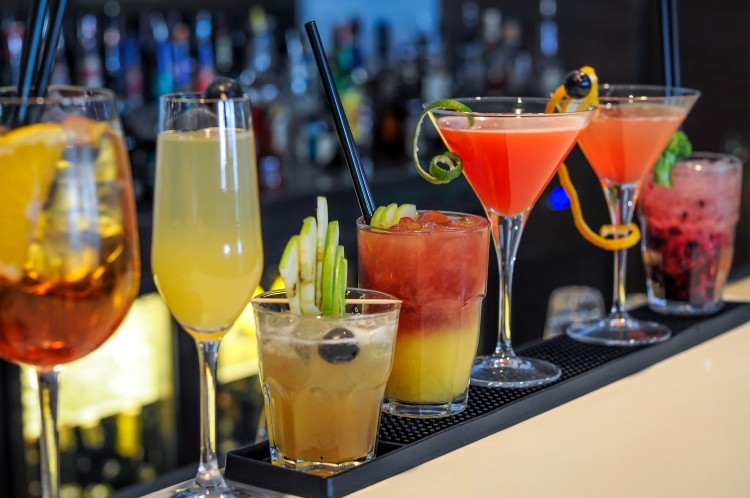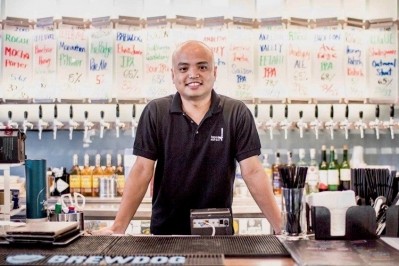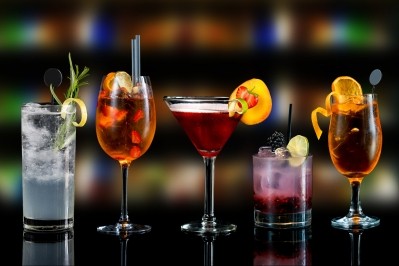One day India will open up to craft gin. Until then, China is the place to be

There is a definite contrast between China and the world’s next most populous nation, India, in their respective markets for craft spirits.
In China, he says, there is a go-get-‘em environment backed up by easy-going import regulations (just as long as you aren’t affected by the Trump trade wars) and no shortage of distributors for a market increasingly partial to premium spirits.
While India is populated by a similarly thirsty and fast-growing middle-class, that’s where the similarities end. If like Green, your role is to open up markets through a distributor, find fashionable bars that will serve your brand, and grow your customer base, India is not the place to do it, despite it having exactly the right demographics.
The trouble, he says, is how the system there is gamed to support the local spirits market.
“India is the world’s biggest whisky market and I’m 100% certain there is a market for gin there because it has become popular everywhere. But unless you have a ridiculous amount of cash-flow, and you are willing to allow your product to wait in customs for years and be prepared to bribe the right people, the door is closed to India,” he explained.
Red tape
The trouble for brands is that a local distributor can operate in just one state. With 29 states and nine union territories, some of which are dry, that would mean separate partners for Maharashtra, to service the lucrative Mumbai market, and Karnataka and its thirsty capital, Bangalore. Delhi’s National Capital Region would need its own distributor, as would Kolkata, India’s third-biggest city. Adding to the headache, individual states have their own regulations and taxes.
“It’s all designed to help local distilleries. I know people who have tried it but they’ve just given up,” said Green.
“I’ve seen some very cool bars and great bartenders in India, but they are all working with the big brands with billion-dollar budgets that are able to wrangle the red tape. If someone told me they were a small distributor who is interested in craft spirits; who is Indian and I knows how to manage the Indian market, I would say, sure, let’s have this conversation. But I haven’t seen anybody like that yet.
“Hopefully I’ve just missed them; maybe someone is brave enough to try do this,” he added.
Instead, he must content himself with China’s market of nearly 1.4bn consumers, and other Asian markets that are also less determined to protect their indigenous spirits industries than India.
China gin craze
In China, the West Winds brand is handled by a fellow Australian Hannah Keirl and her distribution company, Spirits Box. She has been based in Shanghai since leaving India, where she managed 27 bar outlets, and focuses on spirits distribution.
“The difference in ease is China operates as one country and India twenty-odd. Once you get things into China it is very well set up to move things around from city to city. You can move boxes, pallets and containers with relative ease and cost-effectively,” she said.
Saying that, though, it is not always easy to import gins, as authorities sometimes look on the botanicals they contain with suspicion, as they might be listed as traditional medicines.
Also a challenge is how quickly laws change, and any changes are not always disseminated to the industry. But still, the system is still cheaper and easier than in India, Keirl said.
“When I was in India, I would get my invoice and it would show each state where tax was added. In some cases, the shipment would just pass through a state on a train and it would still attract state taxes, even though the liquor had never left its box.
“There is definitely a gin craze in China. That being said, there is still so much more education to be done. It’s still very young for craft spirits though number of brands available is increasing. But we have to work hard to build up bartender and consumer awareness across,” she added.
“Sales are good in China, especially in Beijing, Shanghai and Shenzhen. There’s been a shift of culture there that has been growing very gradually. But a tidal wave moving slowly is okay,” said Green.
“We are seeing a lot of movement into craft gin, led by luxury bars and hotels. The culture is slowly changing as the middle-class becomes more and more prominent. But if all of China comes knocking on the door tomorrow, asking for craft spirits, there definitely won’t be enough left for the rest of the world to enjoy.”
Seafaring 'pirate' gin
The West Winds brand was founded by the Tailor Made Spirits Company about a decade ago in Western Australia with the ambition to become the country’s first premium craft gin.
This might sound like the least original idea an Aussie victualler could have, given the enormous and growing number of brands in operation today, but at the time it was ambitious for a nation that had yet to step on the artisanal bandwagon.
Being from the Margaret River wine-producing region south of Perth, which is known for its laid-back and maritime lifestyle, its surf-loving founders decided to give it a nautical feel.
Dutch sailors had first started settling the area in the 1600s, bringing with them the the juniper-flavoured spirit that was popular in the Netherlands, known as genever—a precursor to the gin consumed today.
“So in Western Australia, long before the British got there in 1788, people were drinking what was fundamentally gin. That’s where the concept comes from: being uniquely Western Australian, being uniquely seafaring and being rooted into the tides and the winds and the ocean,” said Green.
Native Australian botanicals, such as lemon myrtle and bush tomato, are mostly used, while deep local filtered seawater is used to dilute one of the West Winds lines, the Broadside.
The brand’s core gin, the Sabre, is a nod to London dry gins of old, with prominent juniper and containing native lemon myrtle and wattle seed—an ingredient that gives more of a creamy mouthfeel than an abundance of flavour. In all, it contains 11 botanicals.
The Cutlass—“the bad boy gin of the range,” as Green puts it—contains native Australian bush tomato and cinnamon myrtle, and has won a raft of international awards, including the Chairman’s Trophy for the best gin in the world at the New York Ultimate Beverage Challenge.
When it was launched in 2011, adding tomato to gin was considered an outrageous thing to do, says Green.
“We call it ‘pirate gin’. It’s savoury, it’s sweet, it kicks you into gear and it’s very exciting. It has been breaking all the rules. No one would believe you could put tomato in gin. Now, people say doing something like that is pretty cool. We were way ahead.”
And the sea-laced Broadside is a big, bold navy-strength gin with native Australian sea parsley. “You throw it in a dirty martini and it will change your life,” said Green.
The fourth line, a wild plum gin, is not scheduled for release in Asia yet. An alternative to sloe gin, it has a higher ABV at 39%, and a different flavour profile.
“Gin is the fastest growing category in Asia. In the last five years, there has been more than 100 percent growth per year in Malaysia, for example,” said Green.
“Across Asia as a whole, it has been huge. Sales have surpassed vodka in most countries, so you are seeing an incredible uptake in gin, just as you did 15 years ago in London.”
The challenges of retail
In talking about sales, Green is referring to on-trade sales at hotel lounges and cocktail bars. The big challenge for artisanal brands across Asia is to get them picked up by the retail off-trade, given the differences between how people shop in Asia and in Western countries.
In Australia, most of West Winds’s sales come from specialist drinks supermarkets like Dan Murphy’s, where they are bought for home drinks cabinets. These are not so commonplace in Asian countries, where most liquor is found in supermarkets, which tend to stock mass-market brands like Bombay Sapphire and Beefeater. Green is eagerly waiting for the day when this all changes.
“I think there will be a revolution in retail here—some day. There is definitely a gap in the market in places like Singapore and Thailand, if you can get through the red tape that the government has put up—and there is a lot,” he said.
“Someone can make a lot of money doing speciality liquor in the exciting way that Dan Murphy’s does in Australia. Perhaps that can be a business idea someone could follow through.”
Until this happens, his job is to find distributors in new markets who will increase the number of cocktail bars using West Winds gin for their cocktails. With China, Malaysia and Singapore already open for business, he is currently investigating Thailand and the Philippines and cultivating relationships with distributors there.
“The key word is relationships for me. It’s never about buy-low sell-high or about squeezing out every dollar. It’s about what is most mutually beneficial and building those markets,” he said.
“Relationships require cultivation, and to achieve what you want to achieve, the bars stocking your product also need to see results. You can’t have one without the other."







